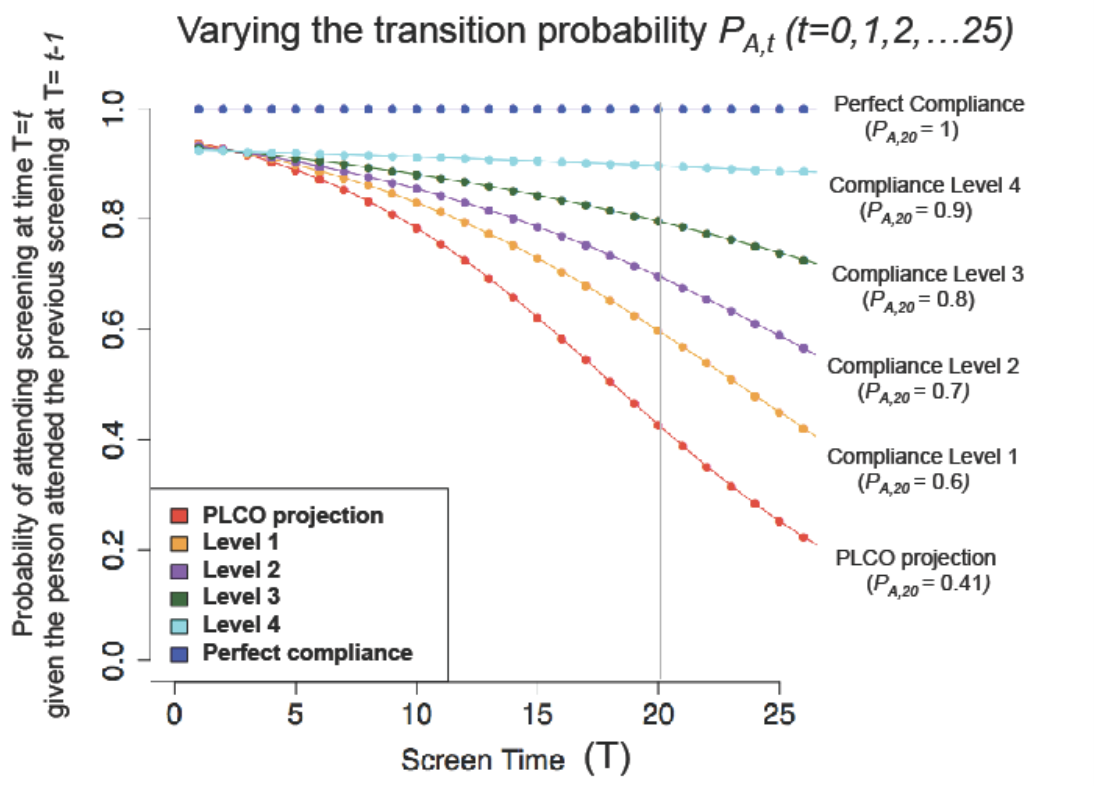Evaluating the impact of varied compliance to lung cancer screening recommendations using a microsimulation model
Citation:
Han S.S., Erdogan S.A, Toumazis I., Leung A., Plevritis S.K., "Evaluating the impact of varied compliance to lung cancer screening recommendations using a microsimulation model", Cancer Causes & Control, 2017, 28 (9), 947 - 958

Abstract:
Background: The U.S. Preventive Services Task Force (USPSTF) recently recommended that individuals aged 55 to 80 with heavy smoking history be annually screened by low-dose computed tomography (LDCT), thereby extending the stopping age from 74 to 80 compared to the National Lung Screening Trial(NLST) entry criterion. This decision was made partly with model-based analyses from Cancer Intervention and Surveillance Modeling Network(CISNET), which assumed perfect compliance to screening.
Methods: As part of CISNET, we developed a microsimulation model for lung cancer(LC) screening and calibrated and validated it using data from NLST and the Prostate, Lung, Colorectal, and Ovarian Cancer Screening Trial(PLCO), respectively. We evaluated population-level outcomes of the lifetime screening program recommended by the USPSTF by varying screening compliance levels.
Results: Validation using PLCO shows that our model reproduces observed PLCO outcomes, predicting 884 LC cases (Expected(E)/Observed(O)=0.99;CI:0.92-1.06) and 563 LC deaths (E/O=0.94,CI:0.87-1.03) in the screening arm that has an average compliance rate of 87.9% over four annual screening rounds. We predict that perfect compliance to the USPSTF recommendation saves 501 LC deaths per 100,000 persons in the 1950 U.S. birth cohort; however, assuming compliance behaviors extrapolated and varied from PLCO reduces the number of LC deaths-avoided to 258, 230, and 175 as the average compliance rate over 26 annual screening rounds changes from 100% to 46%, 39%, and 29% respectively.
Conclusion: The implementation of the USPSTF recommendation is expected to contribute to a reduction in LC deaths, but the magnitude of the reduction will likely be heavily influenced by screening compliance.